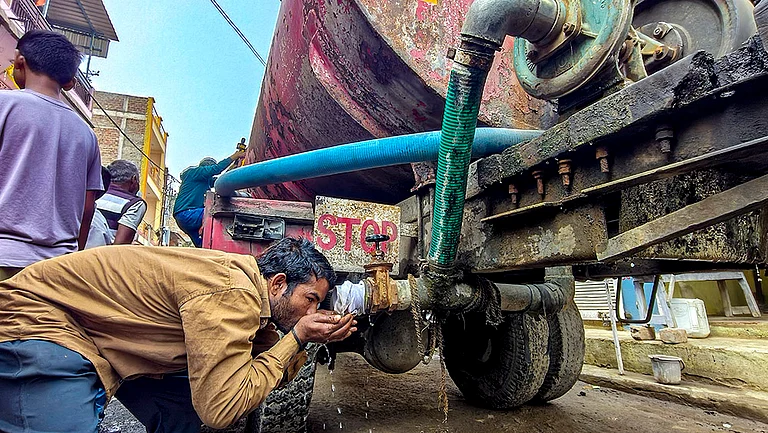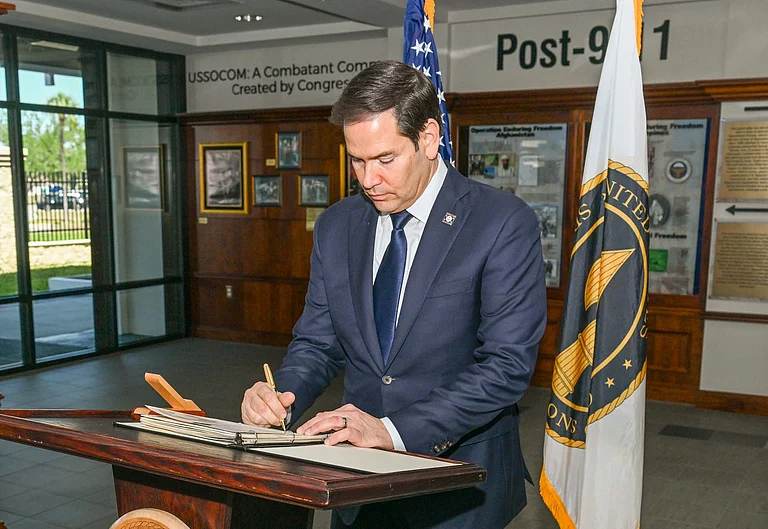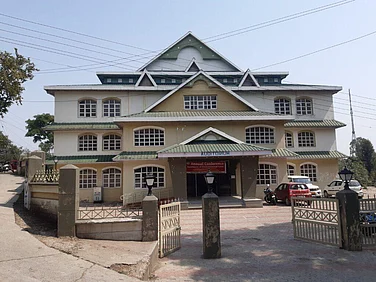“We are already married to each other! We are a family, our pets are like our children…” is how Aakriti* responds, ever so tellingly, when asked if marriage is in store for her. She and her partner Anwesha* have been together for the last eight years. When Section 377 was decriminalized in 2018, many like Aakriti pondered over the question of marriage. Four years after same sex couples like Aakriti and her partner got legal sanction, marriage is not yet on the cards.
For one, despite the decriminalization of same-sex relationships, non-heterosexual marriages are still not legally accepted in India. Nevertheless, the conceptual decriminalisation of same-sex relationships has given a fillip to new forms of acceptable kinship patterns.
Aakriti and other persons from the LGBTQIA community have necessitated a societal rethink of family and marriage as both ideas and institutions. Same-sex relationships have not only dismantled the conservative depiction under the gaze of a patriarchal, heteronormative ethos, but have also creatively reinvented these institutions.
But what does a Family mean?
To better comprehend how same-sex relationships fit into these social institutions, it is pragmatic to first arrive at what constitutes a family. While sociologists and anthropologists have long struggled to present a single definition of family, most describe it as a ‘unit’ or an ‘association’ between adults and their offsprings.
More conservative definitions have imagined the idea of a family from a heterosexual lens, wherein Eliott and Merrill state that “Family is the biological social unit composed of husband, wife and children,” while Ogburn and Nimkoff say “Family is a more or less durable association of husband and wife with or without children or of a man or woman alone, with children,” and Kingsley Davis defines it as “Family is a group of persons, whose relations to one another are based upon consanguinity and who are therefore kin to one another.”
But as we begin to reimagine the institution of family, we turn to Kath Weston’s Families We Choose (1993), wherein she relied on fieldwork in the United States to explore the way gay men and lesbians have begun to construct their own notions of kinship rooted in the symbolism of love, choice, identity, and friendship as the binding features of a family, as opposed to blood relations that characterise heteronormative familial ties.
‘Love’ as a symbol of Identity, Unity, and Belongingness
Weston writes that ‘love makes a family, nothing more, nothing less.’ For queer persons, love has come to represent a symbol of both identity and unity wherein it becomes both a necessary and a sufficient condition for defining familial ties. As Aakriti points out, ‘blood ties are barely a criterion for feeling deep connections, my relationship with my partner is based on a lot more. It is about mutual admiration, acceptance, and the choice to love each other in happiness and sorrows. Love is genderless and she is my family because of the way we live our lives together. If anything, creating this family with each other has helped us realize what we were missing in our biological families!”
Essentially then, what comes across as a defining feature of kinship here is the element of Choice. The ‘families we choose’ have introduced novel features into kinship structures by allowing space for the individual’s agency in deciding who belongs to one’s family. Traditional kinship ties are often based on an egocentric view, wherein a family tree is mapped out from the head of the family, who is usually male in most contexts. To that extent, queer families are often constituted in and function in a more egalitarian fashion.
For instance, Aakriti shares her experiences of being raised in a male-headed biological family, and the shift that she sees in her chosen family today. She says, “there exist some unsaid rules for family members in heterosexual ones, usually delienated by age and gender… who cooks and who cleans, who takes care of the house, of the kids, it usually becomes the woman’s responsibility but same-sex relations tend to have greater equality and understanding that allows a meaningful sharing of burdens.”
Perhaps the idea of choice does two things at once: it liberates one, and also makes one more responsible towards kin, wherein this egalitarian division of labor among gay and lesbian families was also observed by Weston during her fieldwork.
Fluid Families, Varied Memberships: A Domain of Unfettered Creativity
But as choice begins to take the spotlight in our reimagination of family, the institution has also come to be characterized by greater fluidity and varied memberships. As Weston highlights, the distinguishing feature of gay families in comparison to straight families is that the former enjoy more room for what she calls a “creative innovation” or “unfettered creativity.”
Often queer families present their own unique renditions of what can represent a family, as there are no predetermined cycles of expansion or contraction or dispersal and mappable family structures elude anthropologists. When asked about the role of family as a biological unit that ensures the carrying forward of one’s lineage, Aakriti says “certainly our society is obsessed with building family trees… bina vansh aage badhaye kaha baat banti hai,” she says satirically, adding that “society considers childbirth and expansion of families as a matter of pride, more so when we attach that to our caste identity.”
Kinship as an extension of Friendship
But more often than not, friendships build chosen families wherein including more members in the family or excluding others is not only decided but also timed by, and ends with each individual’s choice. “We do think of expanding our family,” says Aakriti, and goes on to add that “we are in fact already a family of eight very close friends.. We have all been there for each other through our thicks and thins, with bonds created and sustained over time and over a number of years. If tomorrow my partner and I decide to marry with rituals and ceremonies, we know that these eight people are going to be our pillars of support, they are going to be a part of the celebrations and the preparations.”
“While we don’t live under a common roof, the connections stay despite physical distances, we are an extended family that looks after each other,” Aakriti adds as her throat gets heavy remembering her special friends. In this innovative structure, cohabitation ceases to be a parameter for chosen families as independent residences become more acceptable.
To put it simply, as opposed to an antagonism seen between friends and family in traditional setups, kinship in queer families becomes an extension of friendships cultivated over years. One of Weston’s respondents, Jenny Chin, said that she was often grilled for giving too much primacy to ‘just friends’ over her ‘actual family.’ Chin says “Family was always supposed to be all-important. Everything was done to preserve the family as a unit. Even if people were killing each other, even if people had twenty year-old grudges and hadn’t spoken to each other!”
Creating a ‘safe space’ through Shared Past, Conflict Resolution, Mutual support
This mutually exclusive idea of family v/s friends is not witnessed in queer bonds. Same-sex kin ties then often function in a way wherein friends become family and family members remain friends, instead of viewing the two as competitors.
The demarcation between friends and family is then often complex, but is settled by certain parameters including the number of years that a friendship sustained, the difficult times it could overcome, and the level of support it provides. As Aakriti puts forth this distinction so eloquently, “it is about a safe space, who belongs in that, who feels safe.” Thus, in case of queer families, sentiment and emotions are often accompanied by conflict resolution, a shared past, and material aid besides moral support for certain friends to be counted as family members.
Historical Devaluation of Same-sex Relationships
This dichotomy of friendship with familial relations has however, often been deployed by anti-LGBTQ groups who often dismiss chosen families as ‘so called families’ and ‘pretended family relations.’ Weston argues that same-sex ties have undergone historical devaluation which sees homosexuality as a matter of sex and sex alone, and dismisses friendship, love, and care for another person as something best left behind with childhood, something that would last only until one starts a ‘real’ family.
In that sense, the idea of a family gets culturally hegemonized and in turn thrusts a heteronormative societal order that regards chosen/queer families as a subsidiary, temporary replacement for, or step along the way towards establishing a biological family.
It is this laggardly recognition to same-sex marriages and families that has retarded social change. When asked if she feels like they miss out on any benefits that a heterosexual couple would enjoy, Aakriti jokingly remarks that “I don’t think there’s much we miss out on, except that I can’t openly tell a colleague who’s keeping me late that my wife is waiting for me at home without them frowning or raising an eyebrow at me!”
She adds that, “the whole obsession with how things ‘ought to be’ means that as a lesbian, I have to be very conscious of what I portray to those outside the community. Of course the absence of a legal recognition of our relationship also means that it becomes impossible to even open a joint bank account, or buy property together. We will likely face immense hardships if we decide to go for adoption. Slowly and gradually things are changing, a law to legalise same-sex marriages would be a step forward but behavioural change in society will still take more time.”
Same-sex Kinship: Not a Derivative of Biological Family
What has become evident so far is the distinctness of kinship patterns among same-sex couples, which drives home the point that the families we choose ought not to be measured against biological families as a threshold. The former is a historical transformation rather than a derivative of the latter.
It has carved out its own functional space and needs to be viewed from the prism of an innovation in the absence of a set ‘model’ family structure, wherein the individual’s sexual orientation or identity becomes the foundation for forging a sense of unity and belongingness with a totality, mediated by the symbolism of love and friendship.
The transformational role of identity in forming and deepening kinship ties was exemplified by Weston’s study. She pointed out how the campaign for a blood drive for persons with AIDS in 1985 incorporated the appeal of identity as a shared substance. Leaflets bearing the headline “Our Boys Need Blood” called on lesbians as “blood sisters” to help “our brothers” in times of need, and this was inevitably and by all accounts a success.
In this respect, it is significant now more than ever to emphatically reimagine kinship through the lens of same-sex relations, that come with novel features: where choice has come to replace biology and identity has overtaken blood ties in cultivating a sense of belongingness.
(* The names have been changed to protect the person's identity)

























